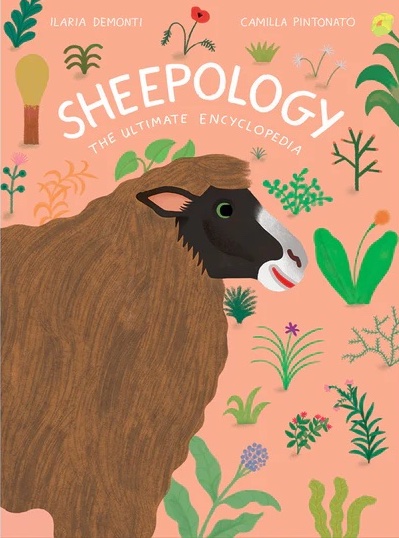
By Ilaria Demonti; illustrated by Camilla Pintonato
Princeton Architectural Press, 2023
80 pages, hardcover, $19.99
“Sheepology”is a visual encyclopedia, much like its companion volumes, “Chickenology” and “Pigology.” It’s written for ages 6 to 10, but older readers will enjoy browsing through it.
The table of contents divides “Sheepology” into five sections and serves as an informal index as there are no chapter or section headers. “Meet the flock” provides a general overview of sheep, from how they became domesticated to a day in the life of a typical sheep. (In case you’re wondering, it’s grazing, ruminating and sleeping.) There’s historical perspective on how sheep — and their manure — helped humans transition to a more stationary lifestyle. Readers will also learn new words, such as “transhumance,” which is the seasonal migration between grazing areas. Of course, in meeting the sheep, you also get to meet the dogs that herd them!
Another section focuses on what sheep are like: their insides, their outsides, their behavior and diseases, and even their memory. It turns out that sheep have excellent memory, especially when it comes to faces. Though I never raised sheep, I did spend time with my friend’s flock. She always needed a hand rounding up one adventurous ewe, as well as some help skirting fleeces. So, I was particularly interested in the section about milk and wool. Not only do we find out how sheep cheese is made, but we get to spend time with wool fibers on a microscopic level and learn about their special qualities.
My favorite part of this section are the spreads that illustrate the process of shearing and processing wool. Illustrations show details of felting (try this with an old wool sweater), knitting and weaving. The final two sections focus on how humans and sheep live together, and the diversity of sheep breeds.
You don’t have to raise sheep to enjoy this book, but if I were going to adopt a flock this is the book I’d put in my kid’s hands.
Sue Smith-Heavenrich, Candor, New York
